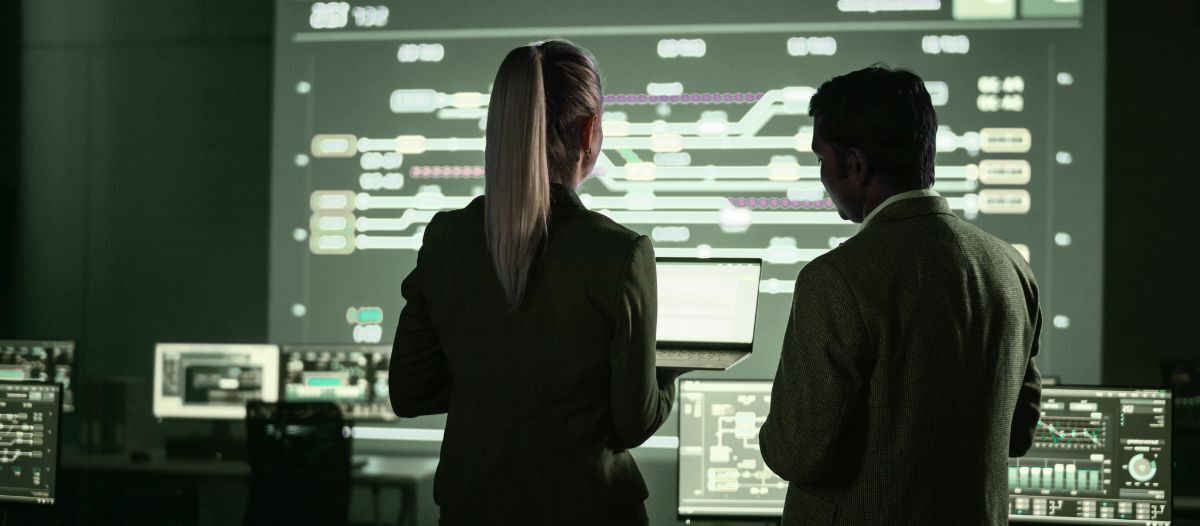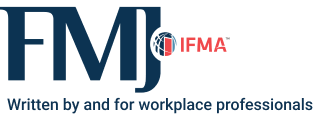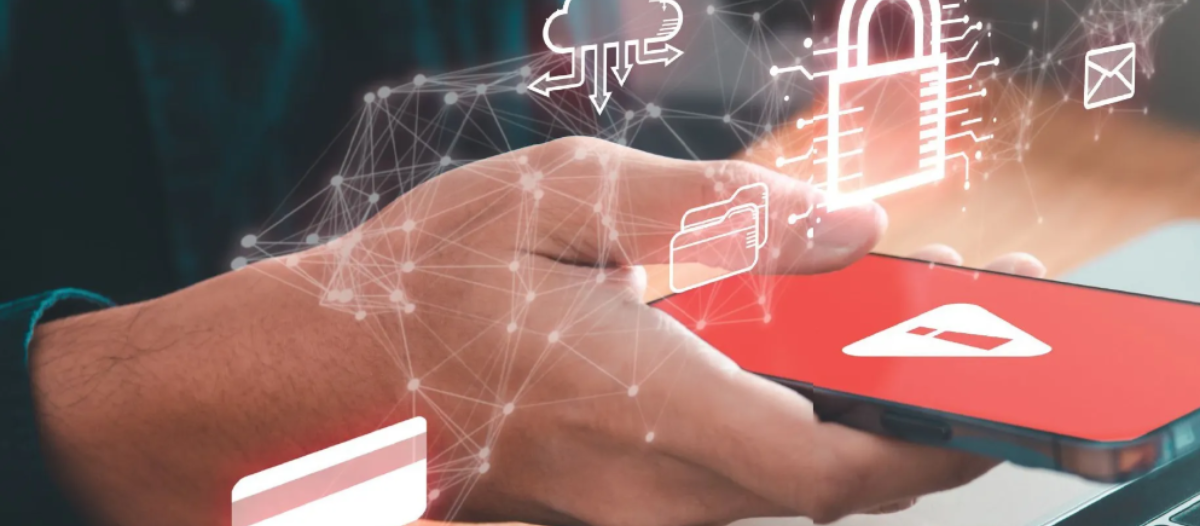A New Definition of Security
Complex challenges emerge in a new landscape

A top annual priority is understanding and addressing seasonal crime and security trends. While physical and cyber security threats remain high on the risk-mitigation radar, they have, in some cases, taken a backseat to security issues presented by the ongoing COVID-19 pandemic. FMs and their security partners should focus on adapting to the evolving contours of a risk landscape that looks very different than it did 18 months ago. Security considerations are now less seasonal and more structural, accounting for risks related to remote and hybrid work, indoor environments reconfigured for health and safety, and network vulnerability and privacy issues. Devising a risk-mitigation strategy with new post-pandemic realities in mind is no longer optional — it is essential.
The new virtual office
Remote working environments and work-from-home models have been a necessity for many during the pandemic. With few traditional offices designed to maintain necessary social distance between employees, it is unlikely that remote or hybrid virtual office solutions will be going away any time soon. While having fewer people in physical office spaces may address one concern, it also presents several challenges.
The immediate focus for many companies is finding a new balance in the role the office plays in the lives of the employee and the employer. Disconnected team members working alone or at home have fewer opportunities to engage in the kind of organic, in-depth personal discussions that foster personal connections and professional inspiration.
Digital relationships do not always satisfy the human need for social interaction. Mental health issues are on the rise – employees are dealing with depression, anxiety and a general loss of motivation.
The potential loss of connection in the current environment poses very real risks. Employees can not only become less productive or less vigilant about information and data security, but may also feel less connected to core company objectives and values, raising the importance of creating a safe working environment for remote employees to address all risk-related elements. This encompasses not just IT security, but also mental health and wellness. Employees who are under stress or who have lost faith in their company are more likely to commit or facilitate (whether willingly or unwillingly) crimes. Consequently, securing the new virtual office needs to include specific steps from supervisor check-ins to virtual social events designed to give employees a sense of ownership and connection to their workspace and their fellow employees.
Given the context of a physically disconnected team operating partially or entirely off site, many decision-makers naturally raise the issue of employee monitoring. For many employers, implementing an employee monitoring solution feels like a logical next step, but that also comes with negative effects that must be considered.
In addition to privacy concerns, employees may feel as though Big Brother is constantly looking over their shoulders. At a time when company loyalty and team solidarity may already be compromised by remote solutions, the last thing employers want is to exacerbate those issues by clumsily implementing a monitoring system without considering employee perspectives. The reality is that, when implemented correctly, employee monitoring can be a positive, even unifying force. The benefits apply not just for employers, who can gain more insight into daily activities and correct issues before they escalate; but also for employees, who are less likely to be overburdened when employers can more strategically spread the workload. Monitoring allows hardworking employees to stand out, making it easier to share accolades and recognize strong performance. Much of the potential resistance to employee monitoring can be mitigated if new measures are introduced openly and honestly, in consultation with unions or employee organizations, and if good faith efforts are made to strike a reasonable balance between security and privacy.
Click & mortar challenges
Going forward, more resources will be devoted to creating new office environments focused on meeting and experiencing, rather than production behind a computer in an individual office. Some businesses are expanding, reconfiguring or renovating to make their spaces safer and more aligned with the needs of a post-COVID-19 office environment.
But many companies have taken a serious financial hit during the pandemic, and, with capital budget cuts, management must be strategic and selective about making the right decisions on investments that need to happen now versus expenditures that can be deferred. Looking at these exercises from a risk management perspective is crucial. In that context, a more integrated and comprehensive FM approach will be valuable.
While there are many new security concerns stemming from the growing reliance on virtual office models, there are also a number of new facility security concerns for brick-and-mortar buildings. From empty offices to less predictable hours and employee patterns, securing properties and structures can be a more complex proposition. Ironically, FM professionals may elect to turn to new digital tools to address their physical security challenges: remote cameras and monitoring, along with the increased use of smart, IoT, AI and connected devices in the workplace, can simplify some of that complexity and be an important new piece of the security puzzle.
The safety and stability of the workforce is obviously top of mind for facility management professionals, which makes implementing and enforcing new COVID-19 programs and protocols a clear priority. Vaccine mandates, documentation and immunity “passports” are a hot topic of discussion and debate — one with clear implications for how employees return to work, engage in business travel and perform other essential tasks.
From new mandates to health and wellness monitoring, FMs face questions about how to coordinate and implement new policies. Who will enforce those policies, what does enforcement look like, and what are the consequences for noncompliance? Determining whether mandates apply not just to workers, but to visitors, vendors, clients and professional partners is another consideration, as is who will bear the expense and logistical burden of monitoring building access limitations.
Whether designing or enforcing a new vaccine mandate or health and wellness policy, decision makers should adhere to best practices, including coordinating with key stakeholders, being transparent with all team members, documenting every step of the process, and consulting closely with security professionals, medical advisors, and legal and HR professionals to be certain that privacy and personal medical data concerns are addressed proactively and responsibly.
IT dominance
In general, IT will play a more dominant role going forward. With the dramatic rise in remote connectivity, there are significantly more points of system vulnerability and (formerly) secure networks.
FM and security professionals may take advantage of digital workplace services like office capacity calculators and a growing suite of available smart office apps and tools. Air quality monitoring tools are likely to grow in popularity, part of what is expected to be an exploding category of sensor and remote monitoring tech designed specifically for public spaces and facilities. The use of cloud-based data collection can provide an extraordinary and valuable new depth of information on how your building is used and how best to provide a safe, secure and healthy working environment. But those tools also come with elevated risk. Facilities that rely more heavily on technology are more vulnerable, with more data that needs to be secured. Security of the IT environment, always important, is only becoming more critical.
The cost of cybercrime is growing. By some estimates1 it will exceed US$10.5 trillion by 2025. Spoofing, phishing and ransomware attacks are on the rise, as businesses, schools and government institutions have been paralyzed by ransomware demands. With those eye-popping numbers in mind, thoughtful investments in IT security are not just smart, but essential.
Travel complications
Travel has become a difficult proposition. Aside from the risks of the actual process itself (being confined in public transportation for an extended period of time with a large group of strangers), different parts of the world can be in very different places with regard to COVID-19 caseloads and public health and safety measures. That variability, along with quarantine mandates and other country-to-country or region-to-region disparities, has made business-as-usual travel unpredictable, and in some cases, impractical or impossible.
For companies with facilities, employees, clients or professional partners overseas, questions about how best to protect property and people and secure the supply chain are obviously top of mind. FM and security professionals must be part of the conversation on how to enforce company policies in facilities overseas, as well as how to handle work travel and personal travel outside of work. Some companies are experimenting with apps that have automated health and travel checks. Others may decide to implement mandatory quarantine periods for any high-risk travel or behavior. The specific security measures surrounding travel are obviously dependent on travel patterns, frequency and a range of other factors, and will vary greatly from one company to the next.
The longest season
In today’s COVID-19-altered landscape, public health unknowns – future variants, vaccine efficacy, caseload surges – combined with planning ahead for a range of policy and operational scenarios – limited occupancy or fully open, vaccines mandates, on-site, remote or hybrid staff – have led to perhaps the single most important asset for facilities and security professionals alike: flexibility. The ability to pivot quickly to address short-term changes and long-term priorities will be one of the defining attributes for successful risk-mitigation strategies not just for this season, but for months, even years to come.











